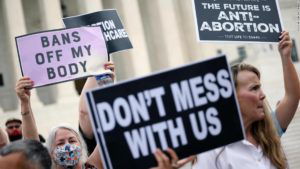
Study Tests the Limits of Truck Safety Systems
May 2, 2013
Washington, D.C. (Law Firm Newswire) April 30, 2013 – An insurance group’s recent study compares the safety performance of eight semi-trailers.
Semi-trailers on “big rig” tractor-trailers are usually equipped with underride guards – steel beams projecting downward from the trailer’s rear end which prevent passenger vehicles from sliding under them during collisions. A newly-released study by the Insurance Institute for Highway Safety (IIHS) tested the performance of underride guards on eight popular semi-trailer models. All models passed the easiest test, but just one passed the toughest test.
Washington, D.C. personal injury lawyer David Lietz commented, “This report is encouraging in that it shows that these safety measures are effective in many collisions. But it also demonstrates that there is lots of room for improvement.”
When an underride occurs during a collision with a truck or trailer, the body of a car, which is designed to absorb the force of a crash, travels under the trailer. The roof, windshield and pillars then collide with the trailer. The passenger compartment may be crushed, resulting in devastating head and neck injuries.
The IIHS study put each trailer through a series of three progressively tougher tests. Each test crashed a 2010 Chevrolet Malibu into a parked trailer at 35 mph. For the first test, the car struck the center of the trailer’s rear end. In the second test, the car was offset – just half its width struck the trailer. In the third test – the most challenging – the overlap was a mere 30 percent.
The overlap tests push the limits of the forces that underride guards can withstand before they give way and allow underride. All trailers passed the straight-on test, and seven of the eight passed the 50-percent overlap test. But just one model – from Canadian manufacturer Manac – passed the 30-percent test.
Researchers found that Manac constructs its underride guard differently from all other tested trailers. The vertical supports of the guard are attached near the edges of the trailer to a specially reinforced floor. The other models have supports attached to part of the trailer’s frame, nearer the center.
Manac’s president indicated to the IIHS that their guard design adds only a small amount to the trailer’s weight and cost. He also said that it helps minimize the damage done to the vehicle itself in a trailer collision. The IIHS confirmed this, noting that the Manac trailer’s repair estimate was among the lowest.
Lietz added, “This is a clear demonstration of the benefits of manufacturing with an attention to safety. Stronger construction of these guards saves lives, and government officials should take a stronger stance on truck accident safety by implementing stricter standards.”
The Lietz Law Firm
888 16th Street NW
Suite 800
Washington, DC 20006
Call: 202.349.9869


